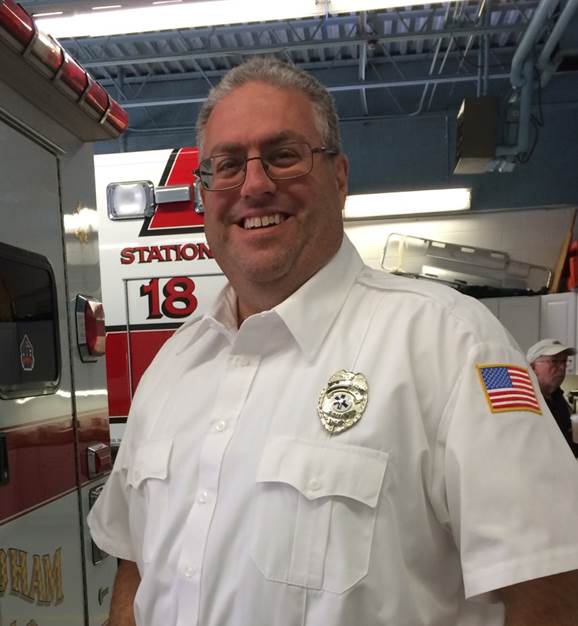|
I just realized that my first time as driver for the squad was a year ago, in early December 2014. It's been a very interesting a year as a volunteer, and I thought I'd share a bit more about the experience. As I mentioned in my introductory post, I had several motivations for joining the squad. Admittedly, I also had a lot of trepidation -- lives are in the balance here at times, and I had zero healthcare background save a CPR course when I was a lifeguard back in my high school and college days. In talking to members at the 2014 Labor Day Carnival, I was surprised to learn that the squad accepted non-EMT members, and that I could make a sizable contribution to the community simply by being able to respond and drive the ambulance. While it required some investment in time and energy, getting myself re-certified with the American Heart Association's CPR for Healthcare Providers program, and taking the Coaching for Emergency Vehicle Operators [CEVO] course, both were completed in short order. And I learned the most important lesson of all.... personal safety comes first. Whether attending to a patient with the flu, or on-scene at a car accident, or providing fire rehab activities in the middle of a rainy night (all calls I participated in within my first month), it was drilled in to me that safety was paramount - first my own safety, then the safety of the crew and other first responders, then the patient, and finally bystanders. When you think of it, it makes sense. If I'm injured or incapacitated, it detracts the EMTs from their focus on the patient. And as a driver, it's my job to make sure my crew is able to safely exit and enter the rig (often with patients in tow).
Beyond ensuring my understanding of personal protective equipment (PPE) and procedures such as use of masks and gloves, squad members took to training me on just about every aspect of the role of driver, from rig maintenance to understanding what each and every piece of lifesaving equipment we carry is used for. As a probationary driver, I had to make a number of calls as an observer, sitting in the passenger seat and learning how to communicate by radio with dispatch and ALS (paramedics), how to make judgement calls on where to position the rig for the safety of crew and patient alike, how to move the stretcher in and out of the rig, even when to use lights and sirens (and when not to do so -- not every call benefits from being 'bright and loud', especially when it raises the stress and anxiety level of the patient). And once everyone felt comfortable that I had a handle on these basic tasks, I started to drive with additional supervision from one of the other drivers or EMTs, until everyone was certain (including myself) that I could handle the role as a full driver. Since the beginning of January, my schedule has permitted me to respond to over 125 calls, mostly as a driver, occasionally as simply an extra set of hands to assist in moving patients from their location (often a 2nd floor bedroom) to the ambulance. Over time, the training has continued in an informal manner, as squad members demonstrated and led me through skills for moving patients using a variety of equipment and methods, as well as through participation in squad training exercises done through our monthly meetings. I was also encouraged to do a few "back of the rig" ride-alongs to observe the basics of care provided by our EMTs, and familiarize myself with record keeping, etc. At every step, squad members answered my questions, explained their thinking and decision making, and generally opened up my mind to the idea that I probably did have the basic skills and capabilities to become an EMT. And so here we go.... 2016 is gonna be an interesting year, that's for sure.
0 Comments
Your comment will be posted after it is approved.
Leave a Reply. |
AuthorJon Alperin, one of our MFAS volunteers, shares his journey to becoming an NJ certified EMT. from the Start
Here is Jon's journey, presented in time order:
Archives
June 2016
Categories
All
|


 RSS Feed
RSS Feed
